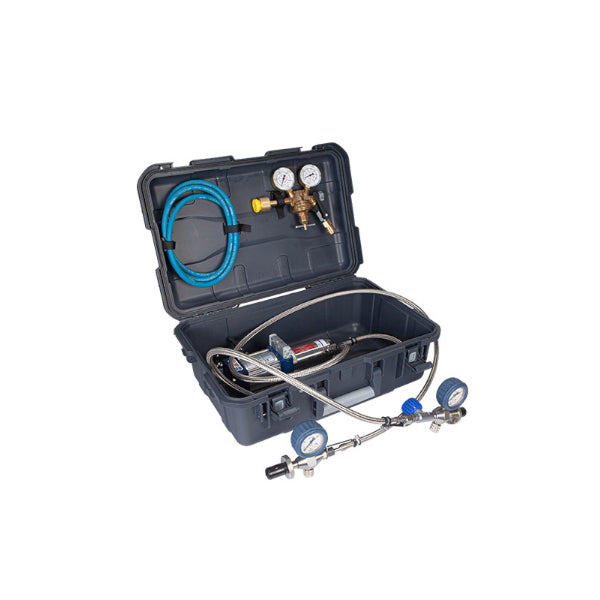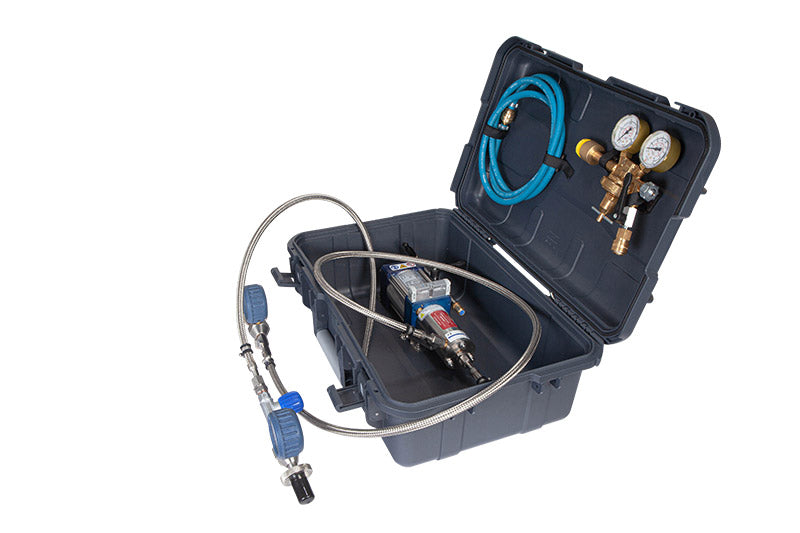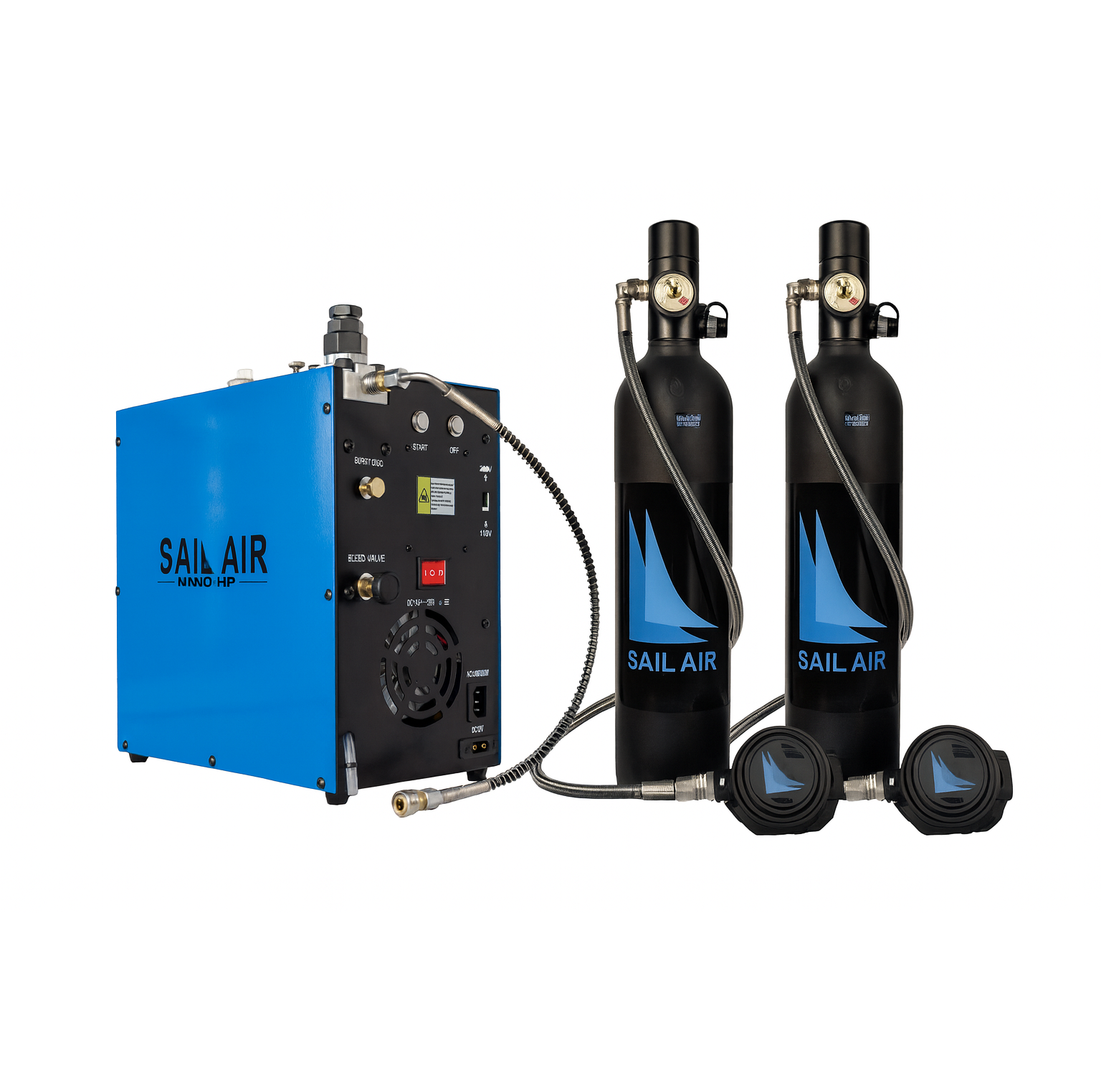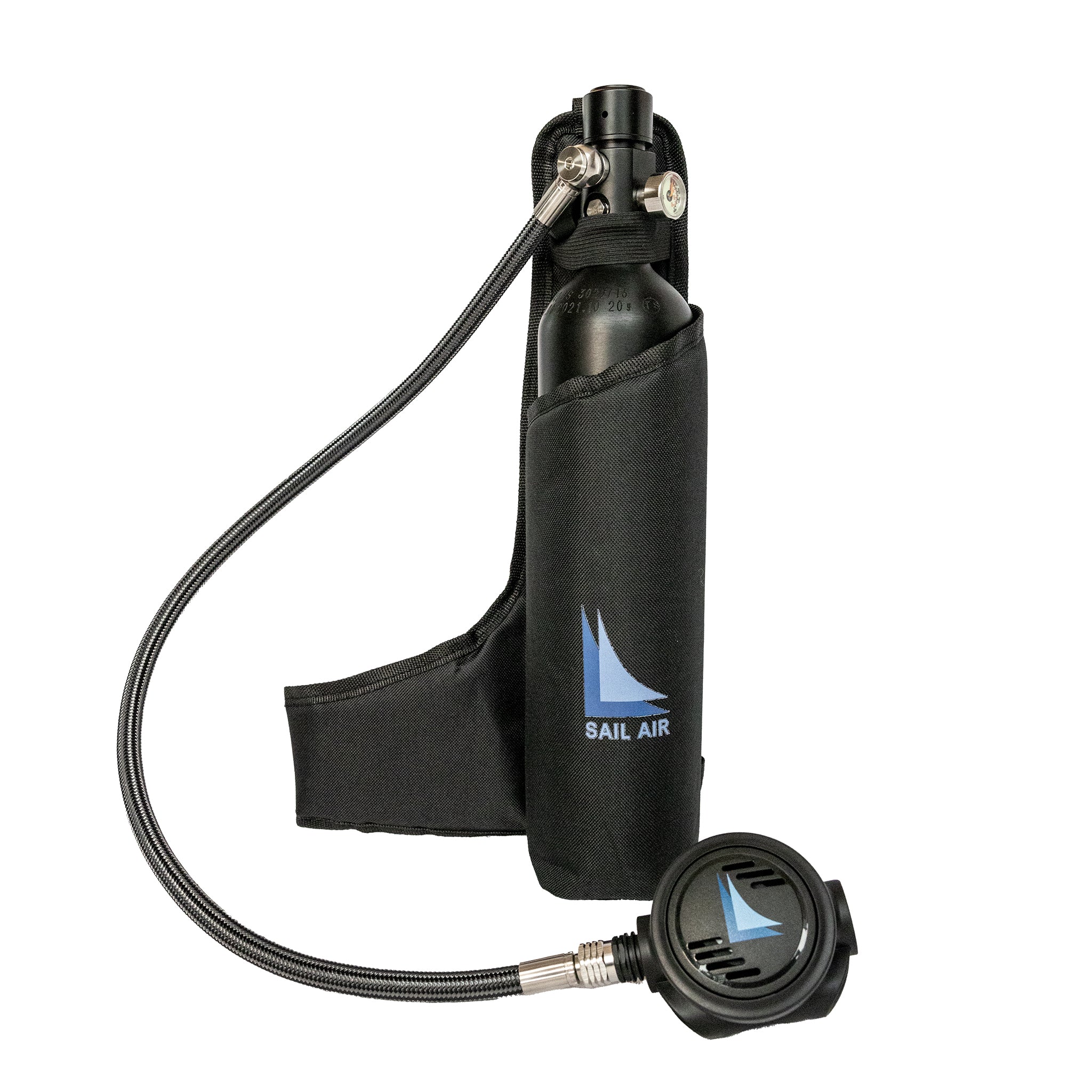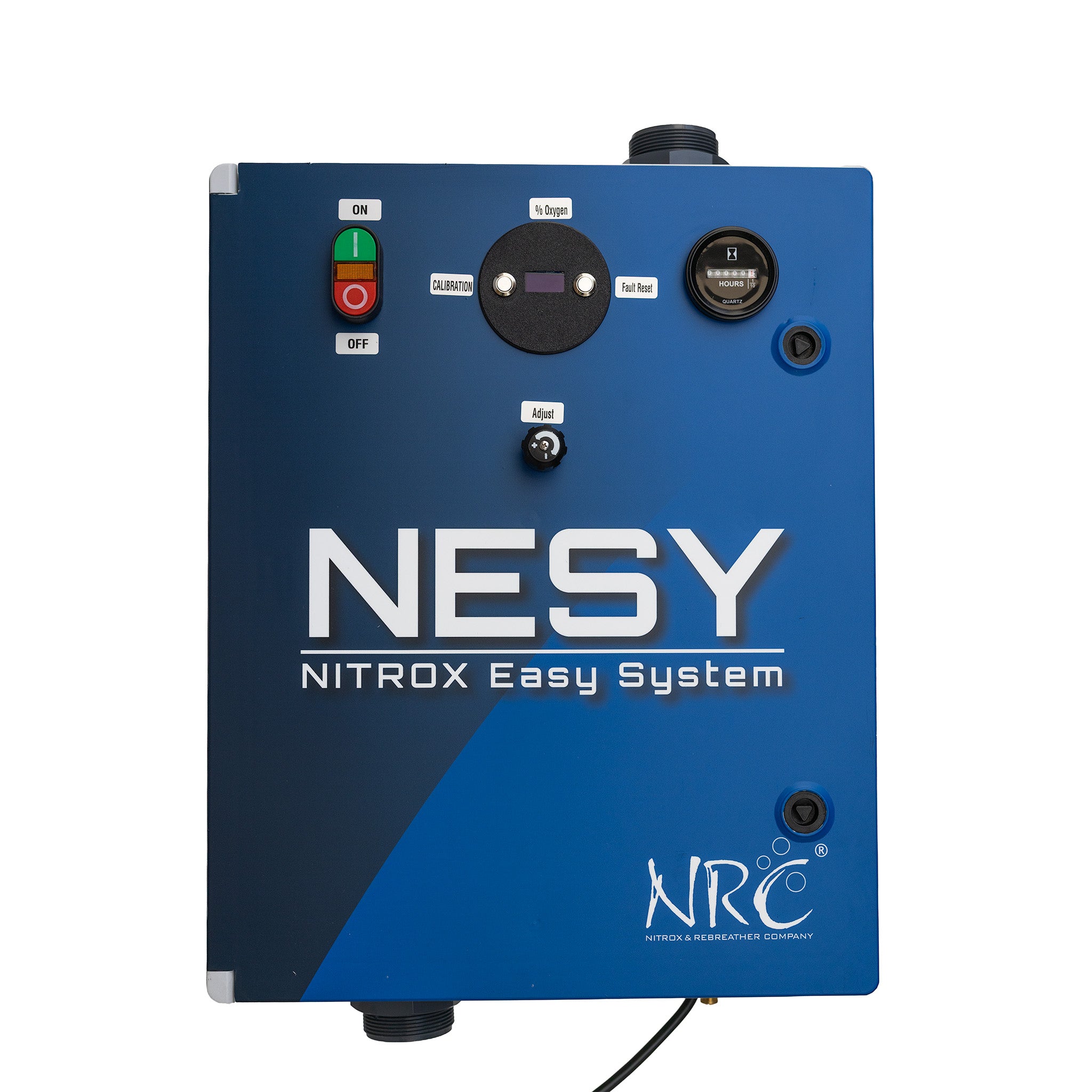You know the frustration of seeing usable pressure left in your helium tanks after a fill. The gauge shows plenty of gas, yet it is no longer usable for blending.
Many dive centers deal with the same problem. Helium is expensive, and the waste adds up faster than most people realize. A single cylinder loses some of its value when it isn’t filled to full pressure. Multiply that by every tank you order in a season, and the loss becomes hard to ignore.
“Dead Volume” is Wasted Money, Is That Correct?
Yes, that’s correct.
And there is a simple way to stop throwing that gas away. A gas booster lets you pull from those “empty” cylinders and get every usable liter into your fills.
What is a Gas Booster and How Does it Work?
A gas booster is a tool that lets you transfer gas from a low-pressure source cylinder into a higher-pressure receiving cylinder. In simple terms, it fills a tank that needs more pressure using gas from a tank that has less. For example, say you have a 50-liter helium storage tank with only 30 bar left.
Without a booster, that gas might stay unused. With a booster, you move that remaining helium into a Trimix cylinder from a previous dive, such as one with 21% oxygen and 35% helium, until you reach the pressure you need.
After the helium transfer, you add oxygen, then finish with air to complete the blend. In this way, the booster makes sure every usable liter of helium is recovered instead of being wasted. To work, the booster itself needs drive gas.
There are three practical ways to supply this drive gas, depending on your setup:
1. Low-Pressure Workshop Compressor
You can run a booster with a workshop compressor, as long as the air is clean and dry. A water separator is required to remove moisture so the booster operates safely and the seals last longer.
2. Pressure Reducer on a Dive Cylinder
A diving cylinder with a pressure reducer set between 0 and 10 bar provides a steady drive source. This method is simple to set up and works well if you want a flexible option without a dedicated compressor.
3. First Stage Regulator with Inflator Hose
The medium pressure from a regulator’s inflator hose can also drive the booster. With a BCD adapter, this becomes a portable solution that is especially useful in the field or in remote locations.
How Does it Reduce Helium Waste?
A gas booster changes the way you use your helium supply. Instead of leaving pressure behind in storage cylinders, it compresses that remaining gas so you can finish your fills to the exact pressure you need.
Without a booster, any gas left in a partially used source cylinder often goes to waste. With a booster, you can safely transfer nearly all of that remaining helium into your dive cylinders. This helps ensure your helium supply is used efficiently, minimizing waste from partially used storage cylinders.
The Importance of Safety in Gas Blending

Safe gas blending starts with proper training and attention to detail. Incorrect mixtures can cause oxygen toxicity, hypoxia, or decompression issues for the diver. For the operator, handling oxygen and high-pressure gases without care can lead to fire, explosion, or equipment damage.
Skill is the most important thing in blending, but good equipment supports the process. A quality booster pump will not replace the expertise of the blender, but it can help maintain pressure control and minimize risks when handling oxygen-rich gases.
The Smart Way to Eliminate Helium Waste
Gas boosters are now standard equipment for operations that want to make full use of their helium supply and maintain precise control over every fill. With a booster, you complete blends with accuracy while reducing the risks tied to manual transfers.
NRC has spent decades developing booster systems that make this process safer and more reliable. Built in Germany standards for oxygen service, each unit is engineered for durability, clean operation, and ease of maintenance.
Whether you run a training center, a technical diving facility, or a liveaboard, an NRC booster system supports your team with consistent performance and professional safety standards.
Don't let another expensive cylinder go to waste.
Explore NRC’s booster solutions to see how we can support your dive operation’s safety and performance!
Frequently Asked Questions
Is a booster really worth the investment for my operation?
Yes. Think about how much helium remains unused in your cylinders every season. For most dive centers, the value of that lost gas adds up quickly. A booster recovers that gas, turning it into usable fuel instead of waste. In most cases, the savings offset the purchase cost in a short time.
How do I know if I need a booster pump?
If you use helium, Trimix, or oxygen for blending and often stop filling when your supply cylinders still show pressure, you are most likely wasting some gas. A booster pump lets you draw down those cylinders, complete precise mixes, and reduce risk during transfers. Dive centers with regular technical fills or anyone who wants safer, more efficient blending will benefit from having one.
What is the difference between a gas compressor and a gas booster?
A compressor takes air or gas from the atmosphere and compresses it to high pressure for storage. A booster is different: it transfers gas that is already in a cylinder and raises it to the higher pressure you need for blending. In other words, a compressor draws in air or gas from the atmosphere to create compressed supply, while a booster increases the pressure of gas that’s already been compressed.

